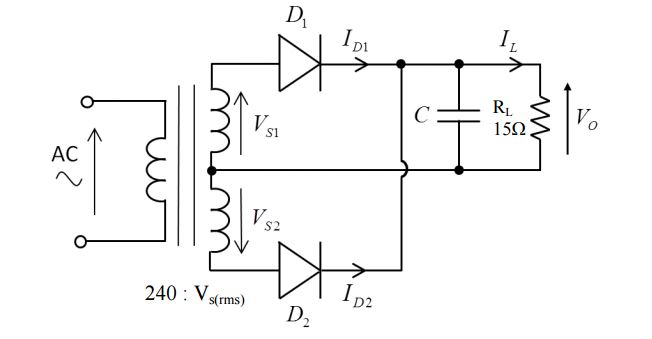Power Conditioning System
PCB
Connectors without locking device
Connectors with Locking Device
Ingress Protection
Intermateability of Connectors
Solar Glass
Bus Wire and Tab Wire
[...]
 Where isolation between the input and output is required, a transformer with a center tapped secondary can be used with two diodes. And, this arrangement is bulky and is avoided unless otherwise necessary.
Rectifiers may be power rectifiers or signal rectifiers. Signal rectifiers are low level rectifiers used in communications circuits. Signal rectifiers are normally called detectors. For them, the reverse voltage and forward current are not the critical ratings. Rather, the forward resistance and shunt capacitance are important because they together limit the highest frequency of operation. Research is continuously on to raise the upper frequency limit of detector diodes.
Where isolation between the input and output is required, a transformer with a center tapped secondary can be used with two diodes. And, this arrangement is bulky and is avoided unless otherwise necessary.
Rectifiers may be power rectifiers or signal rectifiers. Signal rectifiers are low level rectifiers used in communications circuits. Signal rectifiers are normally called detectors. For them, the reverse voltage and forward current are not the critical ratings. Rather, the forward resistance and shunt capacitance are important because they together limit the highest frequency of operation. Research is continuously on to raise the upper frequency limit of detector diodes.